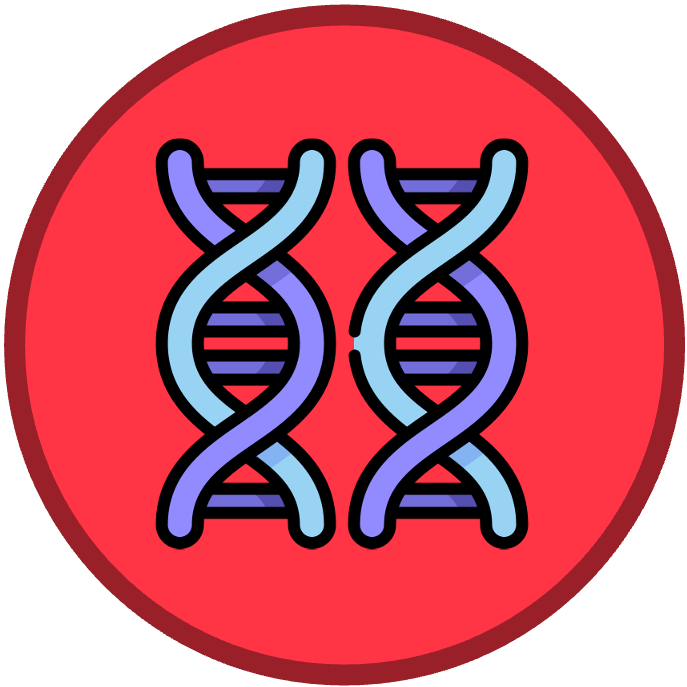

DNA Replication (AHL)
AHL Content Statements
-
A1.2.11
Directionality of RNA and DNA
-
Include 5' to 3' linkages in the sugar–phosphate backbone and their significance for replication, transcription and translation.
-
A1.2.12
Purine-to-pyrimidine bonding as a component of DNA helix stability
-
Adenine–thymine (A–T) and cytosine–guanine (C–G) pairs have equal length, so the DNA helix has the same three-dimensional structure, regardless of the base sequence.
-
A1.2.13
Structure of a nucleosome
-
Limit to a DNA molecule wrapped around a core of eight histone proteins held together by an additional histone protein attached to linker DNA.
AOS: Students are required to use molecular visualization software to study the association between the proteins and DNA within a nucleosome.
-
A1.2.14
Evidence from the Hershey–Chase experiment for DNA as the genetic material
-
Students should understand how the results of the experiment support the conclusion that DNA is the genetic material.
NOS: Students should appreciate that technological developments can open up new possibilities for experiments. When radioisotopes were made available to scientists as research tools, the Hershey–Chase experiment became possible.
-
A1.2.15
Chargaff’s data on the relative amounts of pyrimidine and purine bases across diverse life forms
-
NOS: Students should understand how the “problem of induction” is addressed by the “certainty of falsification”. In this case, Chargaff’s data falsified the tetranucleotide hypothesis that there was a repeating sequence of the four bases in DNA.
-
D1.1.6
Directionality of DNA polymerases
-
Students should understand the difference between the 5' and 3' terminals of strands of nucleotides and that DNA polymerases add the 5' of a DNA nucleotide to the 3' end of a strand of nucleotides.
-
D1.1.7
Differences between replication on the leading strand and the lagging strand
-
Include the terms “continuous”, “discontinuous” and “Okazaki fragments”. Students should know that replication has to be initiated with RNA primer only once on the leading strand but repeatedly on the lagging strand.
-
D1.1.8
Functions of DNA primase, DNA polymerase I, DNA polymerase III and DNA ligase in replication
-
Limit to the prokaryotic system.
-
D1.1.9
DNA proofreading
-
Limit to the action of DNA polymerase III in removing any nucleotide from the 3' terminal with a mismatched base, followed by replacement with a correctly matched nucleotide.



